Thanela: Disease of milch animals, do not delay treatment
Thanela cannot be eradicated completely, but it can definitely be reduced by the precautions taken by the animal husbandry
Mastitis or ‘inflammation of udder’ is a very common and dangerous disease in cows. Foreign cows of crossbreeds, which give more milk than indigenous cows, are more prone to this disease. Thanela is such a disease, which cannot be eradicated completely, but it can definitely be reduced by taking precautions. The milk of a cow infected with Thanela is not fit for use. That milk comes out curdled or coagulated like curd. It also smells bad. Cattle rearers suffer a lot from Thanela. Milk production falls, and the burden of treatment of the animal also falls.
Thanela effect
Due to Thanela, the udders of the cows get knotted, and they become deformed. There is swelling and stiffness in the udder, and there is pain. Cows sick with this disease have high fever and they stop eating and drinking. The infection enters the cow’s body through the duct of the udder itself. Even if the udder is injured, the risk of infection of the udder increases a lot. Milking in the wrong way also damages the udder tubes. Thanela can occur at any age, but its symptoms become severe after delivery.
According to the experts of Meerut-based ICAR-Central Institute for Research on Cattle, diarrhea, sore throat, scarlet fever, brucellosis, and Diseases like tuberculosis (TB) can occur. Antibiotic medicines have to be used a lot for the treatment of Thanela, part of which also reaches our body through the milk and makes us indifferent to antibiotics.
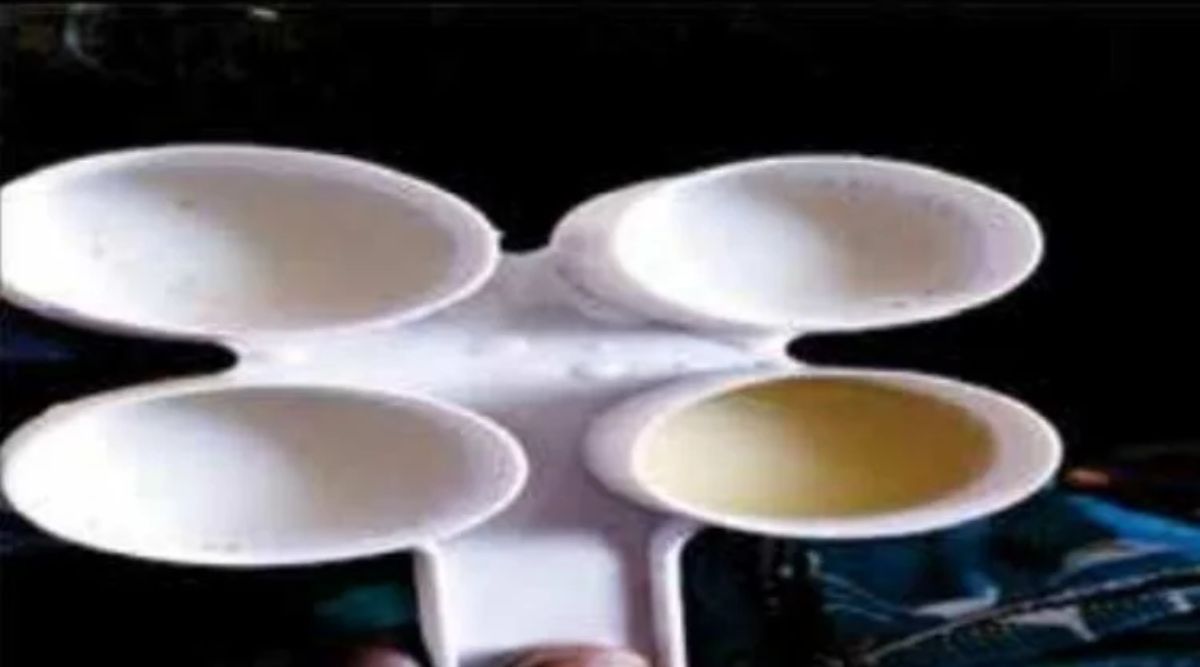
Cause of Thanela Disease
Thanella disease is mainly caused by bacterial infection, but other pathogens such as virus, fungus and mycoplasma can also cause it. Its main bacteria Staphylococcus and Streptococcus are commonly found on the skin of the udder. Whereas Ecoli bacteria live in dung, urine, floor and soil etc. They cause infection of udder when it gets cut due to dirt and any injury to udder. Once it increases, then its bacteria spread with the hands of the milker. If the milking machine is infected, then even that can spread the disease.

Main features of Thanela
Veterinarians have determined four categories based on the intensity of this infection, because they have to take special care of it while treating a sick animal.
Hyper: This is a very severe form. In this the animals have high fever and they stop eating fodder. They have difficulty in breathing. Their udders swell and become very painful. In this condition, milk mixed with pus or blood comes.
Intense: In this condition, there is swelling in the udder and change in the appearance of milk. The milk may be watery, slushy, pus-filled and mixed with blood clots. In this condition any one udder of the animal or all may be affected.
Pre-intense: This condition is often seen in dairy farms. According to one study, up to 40 percent of dairy cattle may have this type of tendon. In this condition the milk production of the animal decreases and the quality of milk deteriorates. Its infection is confirmed by ‘culture sensitivity test’ of milk.
Chronic: This is the last and fatal stage of the disease. In this the udder becomes very hard. The milk-producing glands are destroyed and lifeless tissues take their place. The udders shrink. The milk becomes very thin, pus and blood clots.
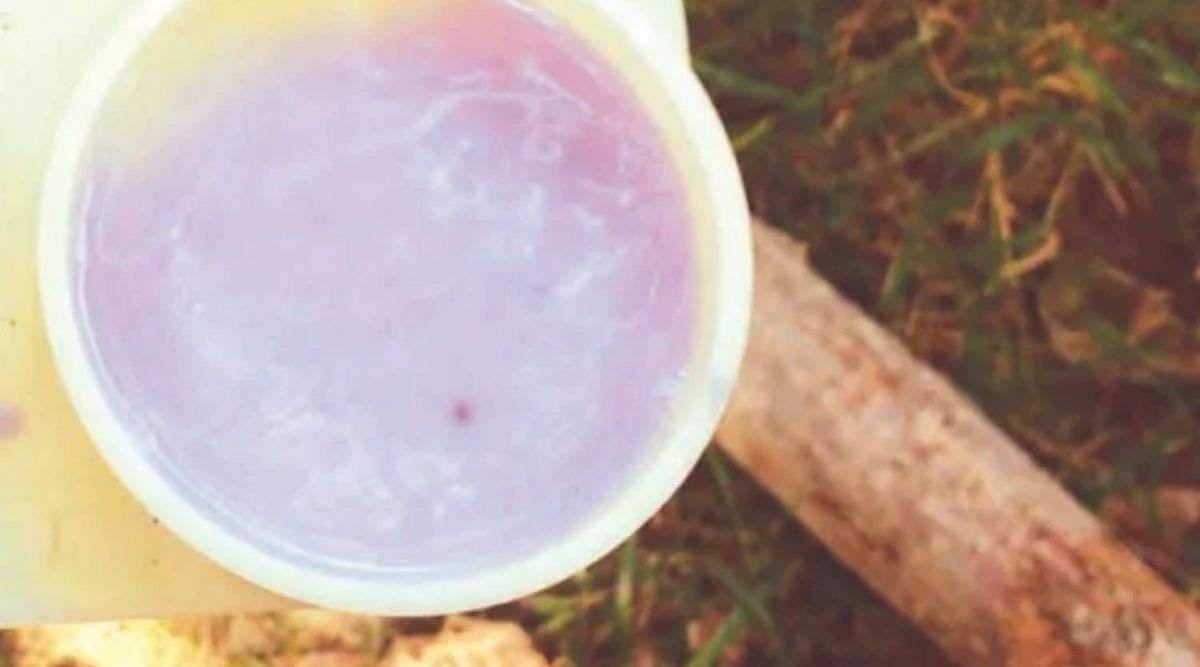
Thanela Disease Diagnosis
Clinical Thanella is easily identified by looking at the symptoms of the disease. For example, swelling in the teats, watery milk coming or sprinkling in milk. But the external symptoms of the disease are not visible in sub-clinical Thanela. That’s why five types of practical tests are done for its identification.
(i) California Mastitis Test (CMT): In this test, adding equal quantity of milk to CMT reagent (reagent) forms a thick gel according to the intensity of Thanela. This gel is rated on a scale of 0, 1, 2 and 3. The thicker the gel becomes, the more severe the disease is considered to be.
(ii) Bromothymol blue test (BTB): In this test, one drop of milk from each of the four udders of the animal is dropped on the BTB card. This changes the colour of the card according to the severity of the disease. For example, green becomes yellow (+), green (++) and blue (+++). Paper strips of BTB are also easily available in the market for the identification of subclinical Thanela. With the help of this, cattle rearers can check the milk of the animal themselves and find out that at what level their animal is affected by the disease. But despite checking themselves, animal parents should treat sick animals only after taking the opinion of a veterinarian.
(iii) Electro conductivity test: Electrical conductivity increases in the milk of animals suffering from the disease. Compared to a healthy animal, the electrical conductivity of the milk of Thanela patient is higher by 0.50 millisiemens per centimeter. This test can be done only with the special machines of the testing center.
(iv) White slide test: This test is done to find out the increased proportion of white blood cells found in milk. For this test, the patient puts 4-5 drops of animal’s milk on a slide. To this add 2 drops of 4 percent sodium hydroxide. Then with the help of a matchstick, keep stirring it for 20-25 seconds. In this test, the more the animal’s milk is infected with Thanila, the thicker its gel will be. If the thanila is old then white flakes are visible in the mixture.
(v) Bromo cresol purple test: This test is based on the change in the pH value of milk. In this add 2-3 drops of 0.9 percent bromo cresol purple reagent to 3 ml of milk. Due to this, the color of Thanela infected milk changes to blue or purple, while the colour of milk of normal or healthy animal remains yellow.
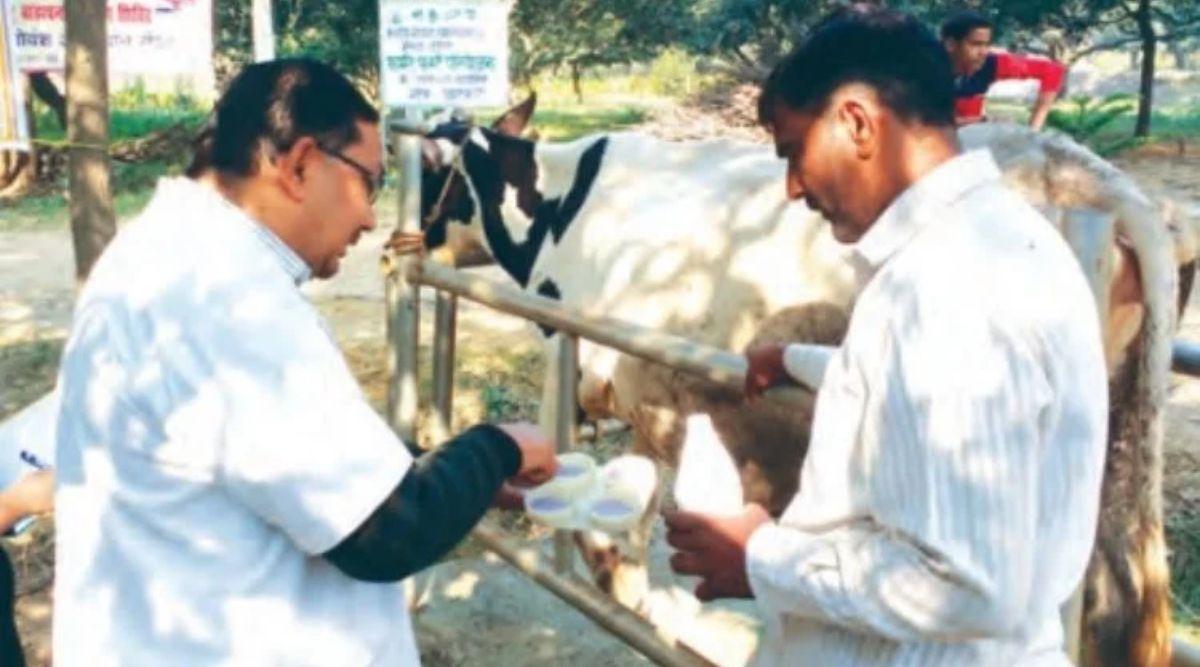
Measures for the Treatment of Thanela
- There should not be any delay in the treatment of Thanela. As soon as its symptoms appear, the animal should be shown to the skilled veterinarian immediately. Delay in treatment can not only increase Thanela disease but can also become incurable. Once the udder of the animal becomes hard or ‘fibrosis’ develops in it, its treatment becomes impossible. As soon as the symptoms of Thanela appear, first separate the diseased animal from the healthy animals.
- If there is a veterinary institute or disease testing laboratory nearby, then first of all fill the milk of the four udders of the animal separately in well boiled and dried glass vials or test tubes and take them for antibiotic sensitivity test. From this, the appropriate medicine is decided for the germ of the disease, so that the treatment is effective, fast and easy.
- For the treatment of Thanela disease, antibiotics like ampicillin, amoxicillin, enrofloxacin, gentamicin, ceftriaxone and sulfa are administered as per the vet’s advice for 3-4 days in the morning and evening. Apart from this, vaccines like meloxicam, nimesulide etc. should also be given to reduce the swelling of teats.
- During treatment, first take milk from healthy udders and keep it separately. Then remove as much milk as possible from the diseased udder. After this, use intra-mammary tube like Pendstrin-SA, Tilox, Cobacten, Mamital etc. for at least three days. The teats must be completely emptied before the intra-mammary tube is inserted into the teats. This can be treated only by placing tubes in the udder for 2-3 days. Humans should not use the milk of an infected animal for at least three days after applying the medicine. Some herbal medicines are also available in the market for the treatment of sub-clinical Thanela, but these too should not be used without the consultation of the veterinary doctor.
- Many times such a knot is formed in the udder duct of animals suffering from Thanela, due to which the secretion of milk stops. In such a condition, complete treatment is not possible with only medicines. That’s why skilled veterinarians open the teat duct with the help of an instrument called a teat siphon. Then 7-8 baby feeding tube is inserted into the duct of the udder and fixed with adhesive tape for a week. During this, treatment with antibiotics continues. After a week, the feeding tube is removed from the udder. This opens the udder duct and milk starts flowing normally.
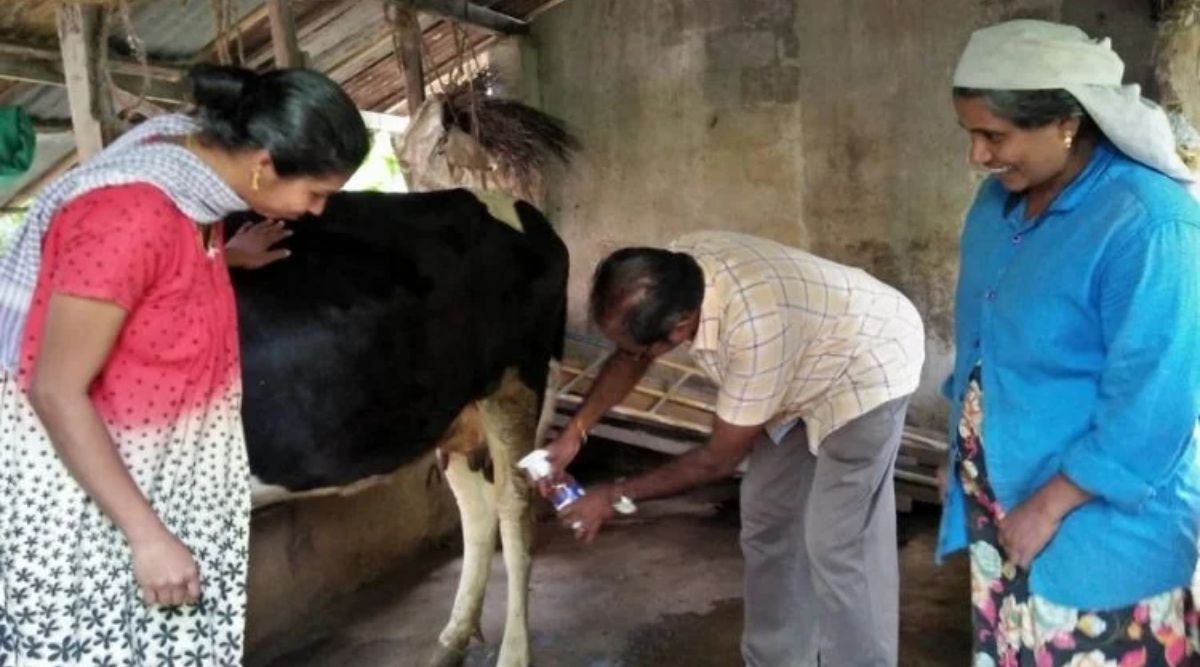
10 Precautions to avoid Thanela
- Do not ignore any injury in the police station. Treat it immediately according to the advice of a skilled veterinarian. Use antibiotics also only after doctor’s examination and advice.
- The chronic disease of the udder, in which the udder becomes hard, its treatment is not possible. Animals that reach incurable condition have suffered from Thanela time and again. The risk of infection of other animals from these is very high, that’s why they should remove the animals from the enclosure and dry them permanently by applying chemical solution on the infected udders with the advice of the doctor. For this, 30-60 ml 3% silver nitrate solution or 30 ml 5% copper sulphate solution is offered to the udder.
- Animals and their enclosures should be kept clean. Do not be negligent in removing cow dung and mud from the enclosure and do not allow water to accumulate there. Keep the floor of the enclosure half raw and half paved. Use straw or gravel on a concrete floor.
- Before and after milking, clean the udder with antiseptic solution and after cleaning wipe dry with a clean cloth. After this wash hands thoroughly with soap. Every day after milking, all the four udders should be dipped in a solution prepared by mixing 80 ml of antiseptic betadine and 20 ml of glycerin in one litre of water. It is also helpful in preventing germs and also heals the wounds and injuries of the teats.
- If milking is done by machine, then the cleanliness and maintenance of the machine should also be good. The cup of the machine should be cleaned with lukewarm water after milking and once a week the machine should be cleaned with antiseptic medicine.
- First the milk of healthy animals should be milked and then the milk of animals with Thanela disease should be extracted.
- Make a habit of standing for 1-2 hours after milking in milch animals. For this, after milking, put a little grain to the animal, so that it remains busy eating and does not sit.
- Stop milking pregnant animals 2 months before delivery and put antibiotic tubes in all four udders for dry therapy. This cures the old Thanela disease and prevents the infection of new germs.
- Include vitamins and minerals like copper, zinc and selenium etc. in the diet of milch animals. These nutrients increase their immunity to Thanela. For this, mix mineral mixture in the grain continuously and give it to the animal.
- For the diagnosis of sub-clinical thanela, keep checking high milk animals at certain intervals. Even before buying a milch animal, make sure to get their milk bag tested.
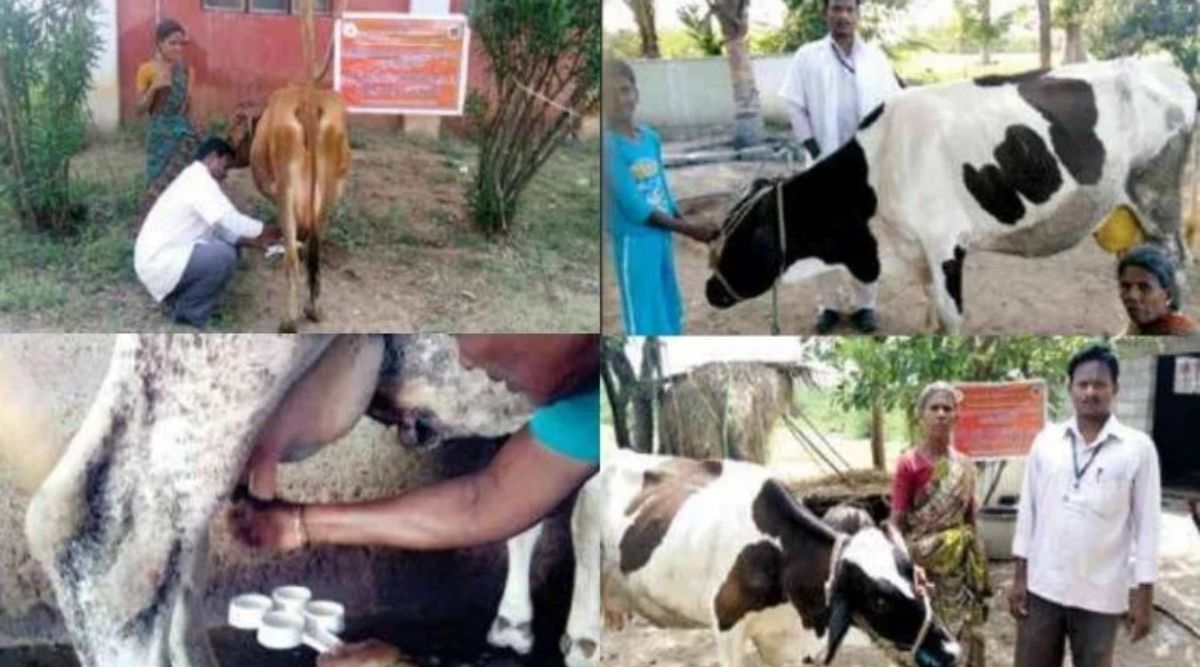
Also Read: Growing scope of Date Palm Cultivation
Contact us – If farmers want to share any valuable information or experiences related to farming, they can connect with us via phone or whatsapp at 9599273766 or you can write to us at “[email protected]”. Through Kisan of India, we will convey your message to the people, because we believe that if the farmers are advanced then the country is happy.
You can connect with Kisan of India on Facebook, Twitter, and Whatsapp and Subscribe to our YouTube channel.



